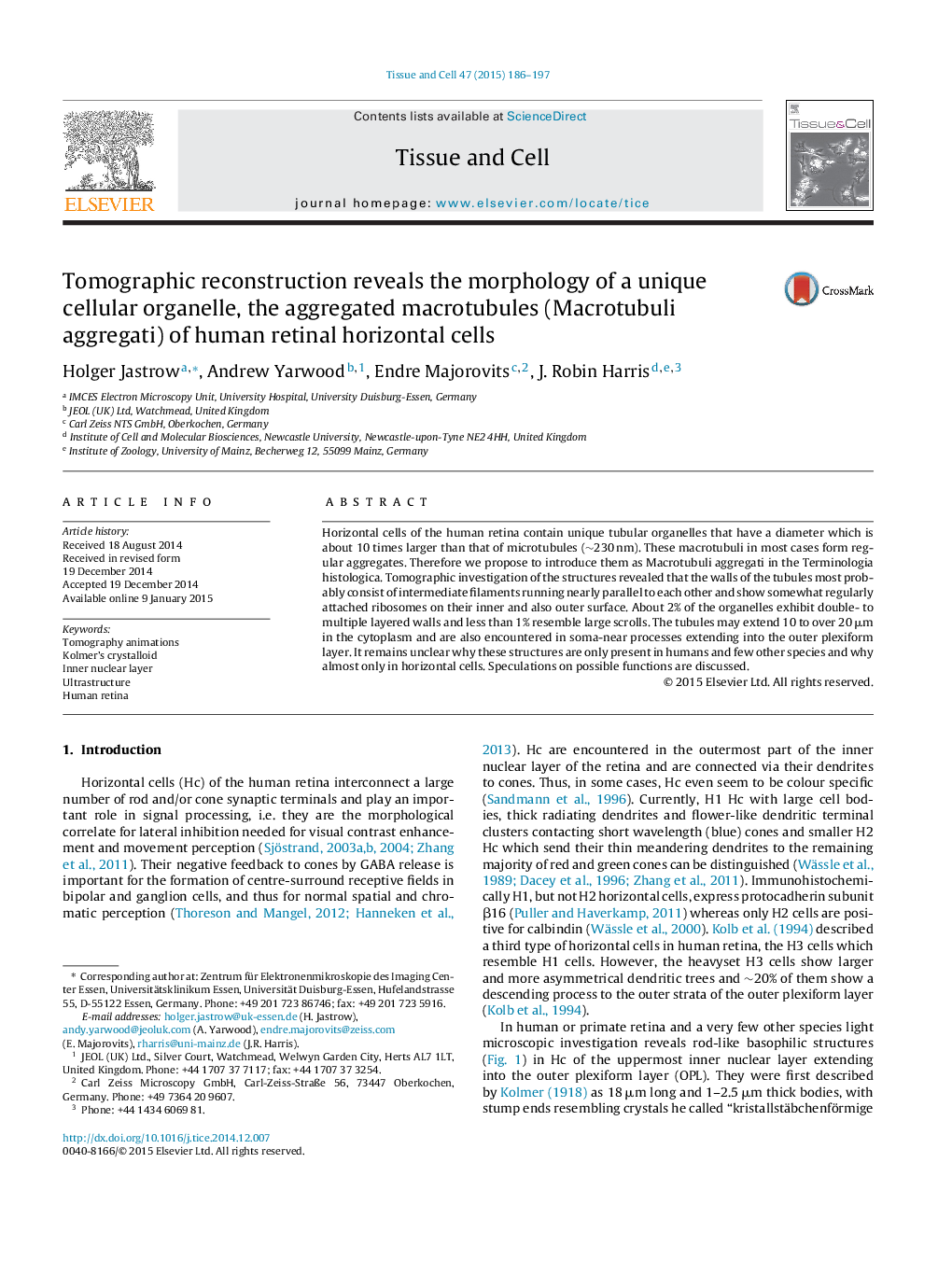| Article ID | Journal | Published Year | Pages | File Type |
|---|---|---|---|---|
| 2203693 | Tissue and Cell | 2015 | 12 Pages |
•Horizontal cells of the human retina contain unique arrays of large tubular organelles.•Parallel aggregated tubules are up to 20 μm in length with diameters of ∼230 nm.•Walls of parallel intermediate filaments attach ribosomes.•Proposal to introduce organelles as Macrotubuli aggregati in the Terminologia histologica.
Horizontal cells of the human retina contain unique tubular organelles that have a diameter which is about 10 times larger than that of microtubules (∼230 nm). These macrotubuli in most cases form regular aggregates. Therefore we propose to introduce them as Macrotubuli aggregati in the Terminologia histologica. Tomographic investigation of the structures revealed that the walls of the tubules most probably consist of intermediate filaments running nearly parallel to each other and show somewhat regularly attached ribosomes on their inner and also outer surface. About 2% of the organelles exhibit double- to multiple layered walls and less than 1% resemble large scrolls. The tubules may extend 10 to over 20 μm in the cytoplasm and are also encountered in soma-near processes extending into the outer plexiform layer. It remains unclear why these structures are only present in humans and few other species and why almost only in horizontal cells. Speculations on possible functions are discussed.
